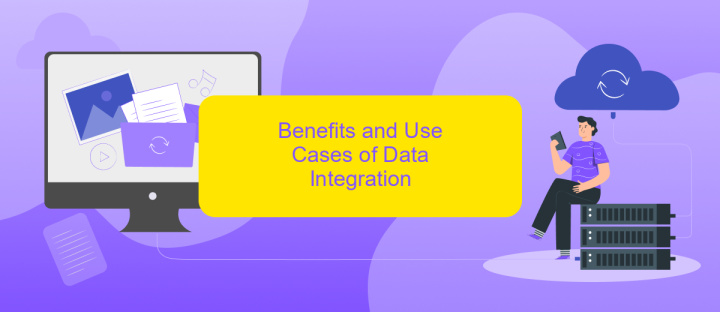Data Integration vs Application Integration
In today's interconnected digital landscape, the distinction between data integration and application integration is crucial for optimizing business processes. While data integration focuses on unifying information from diverse sources into a cohesive dataset, application integration aims to enable seamless communication and functionality between different software applications. Understanding the differences and applications of each can significantly enhance operational efficiency and decision-making.
Introduction
In today's rapidly evolving digital landscape, businesses are increasingly relying on various software applications and data sources to streamline operations and enhance decision-making processes. Understanding the differences between Data Integration and Application Integration is crucial for organizations aiming to optimize their technological infrastructure.
- Data Integration focuses on combining data from different sources into a unified view.
- Application Integration involves connecting different software applications to work together seamlessly.
- Both integration types aim to improve efficiency but serve distinct purposes.
Choosing the right integration strategy depends on specific business needs and objectives. Services like ApiX-Drive can simplify the process by providing robust tools for both Data and Application Integration. By leveraging such platforms, organizations can ensure smoother workflows, better data accuracy, and improved overall performance.
Data Integration vs Application Integration: Key Differences

Data Integration focuses on the consolidation of data from various sources into a unified view, making it accessible and useful for analysis and reporting. This process ensures that data from different systems is harmonized and stored in a centralized repository, such as a data warehouse. Data integration is essential for organizations looking to leverage big data analytics and achieve a comprehensive understanding of their operations. It involves ETL (Extract, Transform, Load) processes and requires robust tools to handle large volumes of data efficiently.
Application Integration, on the other hand, is about enabling different software applications to communicate and work together seamlessly. It ensures that business processes are streamlined by connecting various applications, allowing them to share functionality and data in real-time. This type of integration is crucial for improving workflow efficiency and reducing redundancy. Services like ApiX-Drive can facilitate application integration by providing a platform to automate the synchronization of data between different applications, ensuring that they operate in harmony without manual intervention.
Benefits and Use Cases of Data Integration

Data integration offers numerous benefits and is essential for modern businesses aiming to streamline operations and enhance decision-making processes. By consolidating data from various sources, organizations can achieve a unified view of their information, leading to more accurate insights and improved efficiency.
- Improved Decision-Making: Centralized data allows for comprehensive analysis, enabling better strategic decisions.
- Increased Efficiency: Automating data collection and integration reduces manual effort and minimizes errors.
- Enhanced Data Quality: Integrating data from multiple sources ensures consistency and accuracy.
- Cost Savings: Streamlined processes and reduced labor costs lead to significant financial savings.
- Scalability: Easily scalable solutions can grow with your business needs.
Use cases for data integration span various industries. For example, in retail, integrating sales data from different channels helps in inventory management and customer analysis. In healthcare, combining patient data from various systems enhances patient care and operational efficiency. Tools like ApiX-Drive facilitate seamless data integration by providing automated workflows and easy-to-use interfaces, making it accessible even for non-technical users.
Benefits and Use Cases of Application Integration

Application integration streamlines the interaction between different software systems, ensuring seamless data exchange and improved workflow efficiency. By allowing disparate applications to communicate and share information, businesses can enhance their operational agility and responsiveness.
One of the primary benefits of application integration is the elimination of data silos. When applications are integrated, data can flow freely across systems, providing a unified view of information. This leads to better decision-making and more efficient business processes.
- Enhanced operational efficiency through automated workflows
- Improved data accuracy and consistency
- Real-time data access and updates
- Reduced manual data entry and associated errors
- Scalability to accommodate business growth
Tools like ApiX-Drive facilitate the setup of application integrations by offering pre-built connectors and a user-friendly interface. This allows businesses to quickly integrate their applications without extensive coding knowledge. As a result, companies can focus on their core activities while enjoying the benefits of a connected software ecosystem.
Choosing Between Data Integration and Application Integration
Choosing between data integration and application integration largely depends on your specific business needs. Data integration focuses on combining data from different sources into a unified view, which is essential for analytics, reporting, and data warehousing. On the other hand, application integration connects different software applications to work together seamlessly, ensuring real-time data exchange and process automation. For instance, if your goal is to create a comprehensive data repository for business intelligence, data integration would be the appropriate choice.
However, if your objective is to streamline workflows and ensure that various applications within your organization communicate effectively, application integration is the way to go. Services like ApiX-Drive can facilitate both types of integrations by providing a user-friendly platform to connect different data sources and applications without extensive coding. By evaluating your business requirements and considering the strengths of each integration type, you can make an informed decision that aligns with your operational goals.
FAQ
What is the primary difference between Data Integration and Application Integration?
Why is Data Integration important for businesses?
Can Data Integration and Application Integration work together?
What are some common challenges in Data Integration?
How can businesses automate and manage their integrations effectively?
Time is the most valuable resource in today's business realities. By eliminating the routine from work processes, you will get more opportunities to implement the most daring plans and ideas. Choose – you can continue to waste time, money and nerves on inefficient solutions, or you can use ApiX-Drive, automating work processes and achieving results with minimal investment of money, effort and human resources.

